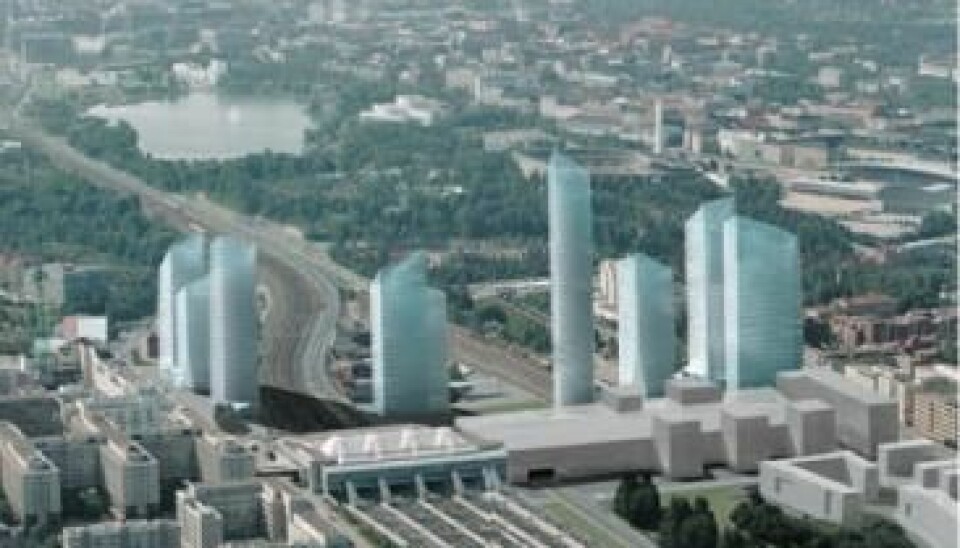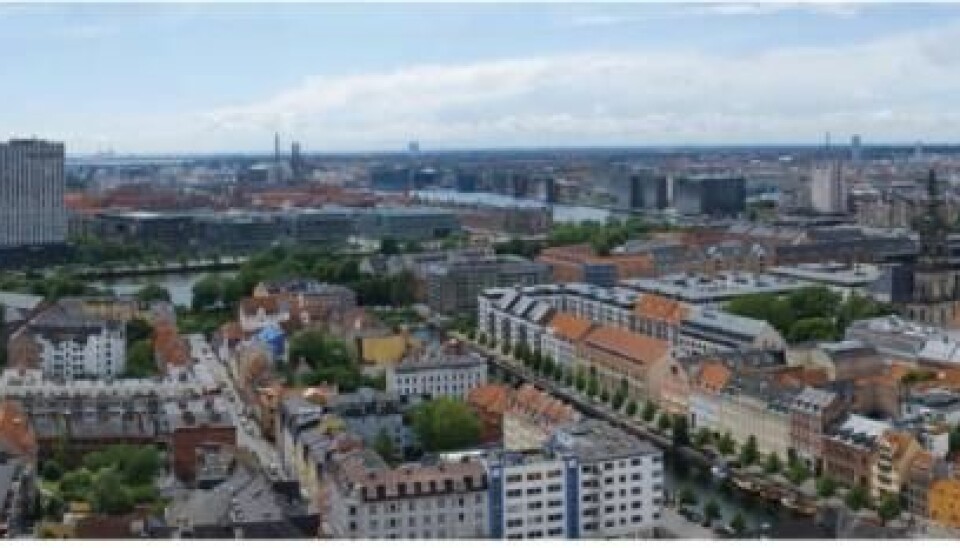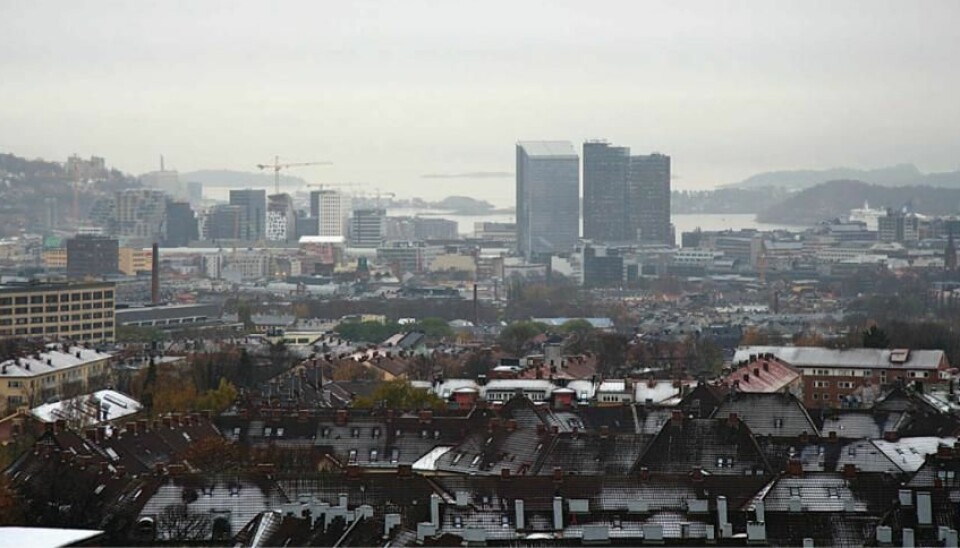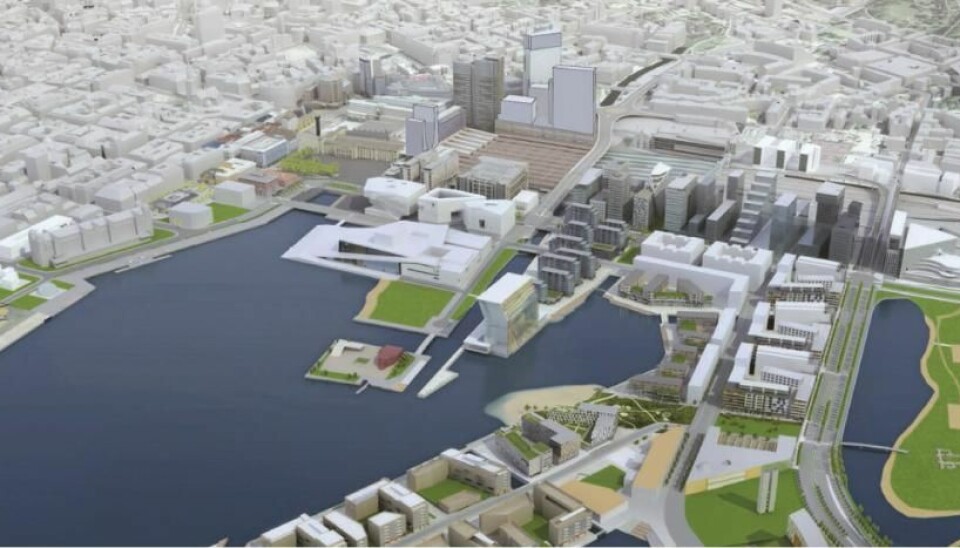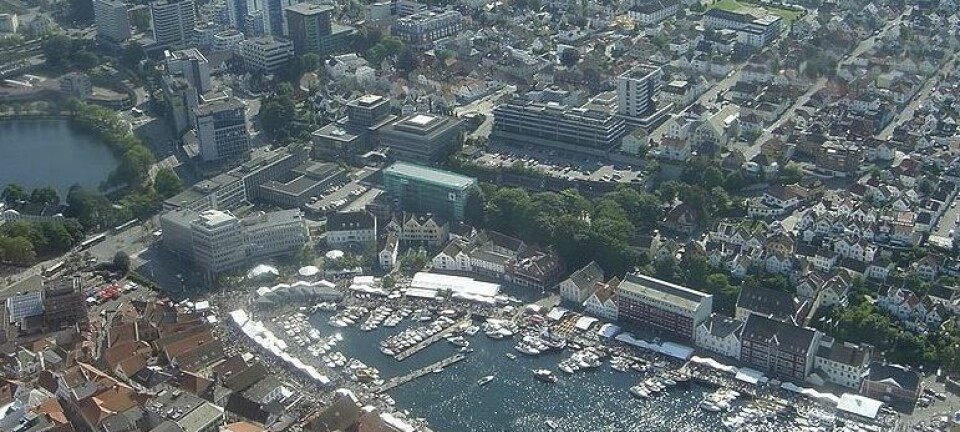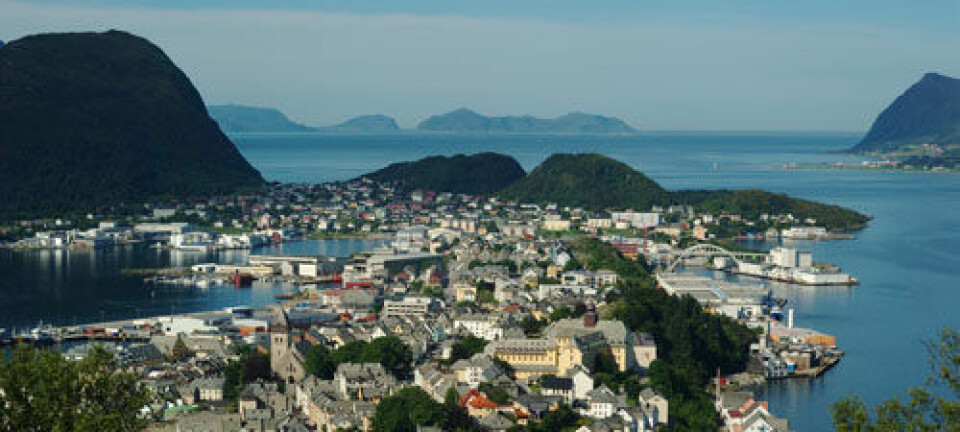Nordic tower power
Tourists may find them picturesque, but Nordic capital cities, with their historic low skylines, face an economic challenge: how to attract business and accommodate population growth without ruining the skyline with ‘vertical sprawl’.
Denne artikkelen er over ti år gammel og kan inneholde utdatert informasjon.
Surrounded by hills, Oslo has always naturally faced the fjord to the south.
For several decades, the only structures that poked up above the roofs were church spires and the Town Hall. Not any more. The fairly uniform skyline seen from the sea has been transformed by what is called a ‘barcode row’ of high-rise buildings on the eastern seafront.
900 metres of high-rises
Of the dozen tower blocks under development, ranging from 12 to 18 stories high, nine have so far been completed. With even more high-rises on the way, a continuous row of 17-18 buildings will emerge, 12 to 37 stories high, stretching 800-900 metres along.
“It seems like the point is to tell the world how wealthy Norway has become,” a British expat commented.
But there are good reasons to applaud these developments, says Bård Folke Fredriksen, the city councillor in charge of development.
“They will accommodate 45,000 workplaces and 5,000 homes, and make efficient use of the public transport capacity in the area,” he says.
High-rise pockets in the city
“I feel we have a very restrictive policy on high-rises. We are at a latitude of 60 degrees north, so tall buildings cast long shadows. A strong case has to be made for every tower block under development, and they should also be slim and sculpted in design.”
Folke Fredriksen argues that creating concentrated pockets of high-rises next to open, low areas - such as the fjord – meets the need for both esthetic and compact city planning.
“As long as we ensure a certain amount of sea view, there should be scope to build upwards in more places along the fjord. We could also build high at transport hubs and next to selected green areas.”
Stockholm’s scattered high-rises
Stockholm has taken a different approach. Rather than lumping high-rises together, the city has mainly kept its buildings to a general height of 6-7 stories, with scattered tall ‘iconic’ structures in each city region.
One of the major developments currently underway is in the Norra Station area, which will contain 6,000 homes and 32,500 workplaces in total - including the new Scandinavian Life Sciences complex.
Unlike Oslo, the height of the new buildings is restricted to six stories except at each end of the development, where a maximum of 12 stories will be allowed. The sole exception is Tors Torn (Tor’s Towers), two 145 metre high-rises planned as a portal between the old area of Norra Station and the new development of Hagastaden.
The need for iconic buildings
However, Tors Torn has been put on hold due to the strict design requirements, which stipulated a tapering design. This would have made the uppermost stories unusable as a working space and thus financially too costly. Design renegotiations are now underway.
There is a need for an iconic building to mark the scale of the development in Norra Station and the importance of life science as a priority for Stockholm and Sweden, argues Aleksander Wolodarski. He is a city planner at Stadsbyggnadskontoret, Stockholm’s office for urban planning, which oversees and initiates new developments in the capital.
“Stockholm could miss a unique opportunity to promote the city globally as the Life Science city. Without an iconic structure this will be much more difficult,” says Wolodarski.
Copenhagen’s new mini-castle
Situated in a flat landscape, Copenhagen is not an easy city in which to hide high-rises. Buildings in the old town have a general height of four stories, and tall buildings are not allowed. According to the city’s planning regulations, high-rises should mark existing or new hubs, and be located as visual markers for road arteries, the harbour and shipping lanes.
One of the most contentious high-rise projects in recent times is the Scala high-rise near Tivoli. While the original stipulation from 2006 set a maximum height of 65 metres, the developers amended the plans a couple of years later to a twisted structure rising more than double the height – to 130 metres.
The most recent suggestion, which has been accepted, is a ‘mini-castle’ consisting of five towers ranging from 28 to 61 metres.
Helsinki: no high-rises allowed
With Oslo at one end of the high-rise spectrum, and Stockholm and Copenhagen cautiously permissive, Helsinki is the city with the most restrictive policy.
With the exception of the 60 metre Hotel Torni - built back in 1931 – the nearest high-rise is several kilometres out of the city centre. And you won’t find more than a few.
“We have had a clear policy on not building upwards. We wanted a low, classical skyline, punctuated by church spires,” says retired city architect Mikael Sundman.
But nevertheless, more high-rises are on the way. There are plans to build 10 tower blocks in Paisila, three kilometres outside the city, ranging from 20 to 30 stories. The final decision on whether to go ahead will be made this year. Up, up…or away?








